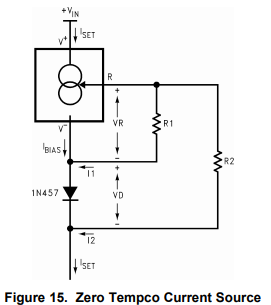Other Parts Discussed in Thread: LM4132
Hi, could someone please specify what Vin should be? I am trying to obtain a 1mA current source (temperature compensated). However changing Vin is also changing the output current hence I am not sure.
Moreover Vin is shown at V+ meaning that it is the supply voltage and where should the ground be connected? To V- or to the other end of the load source.
I am also open to better current source ideas/modules.
Thank you



